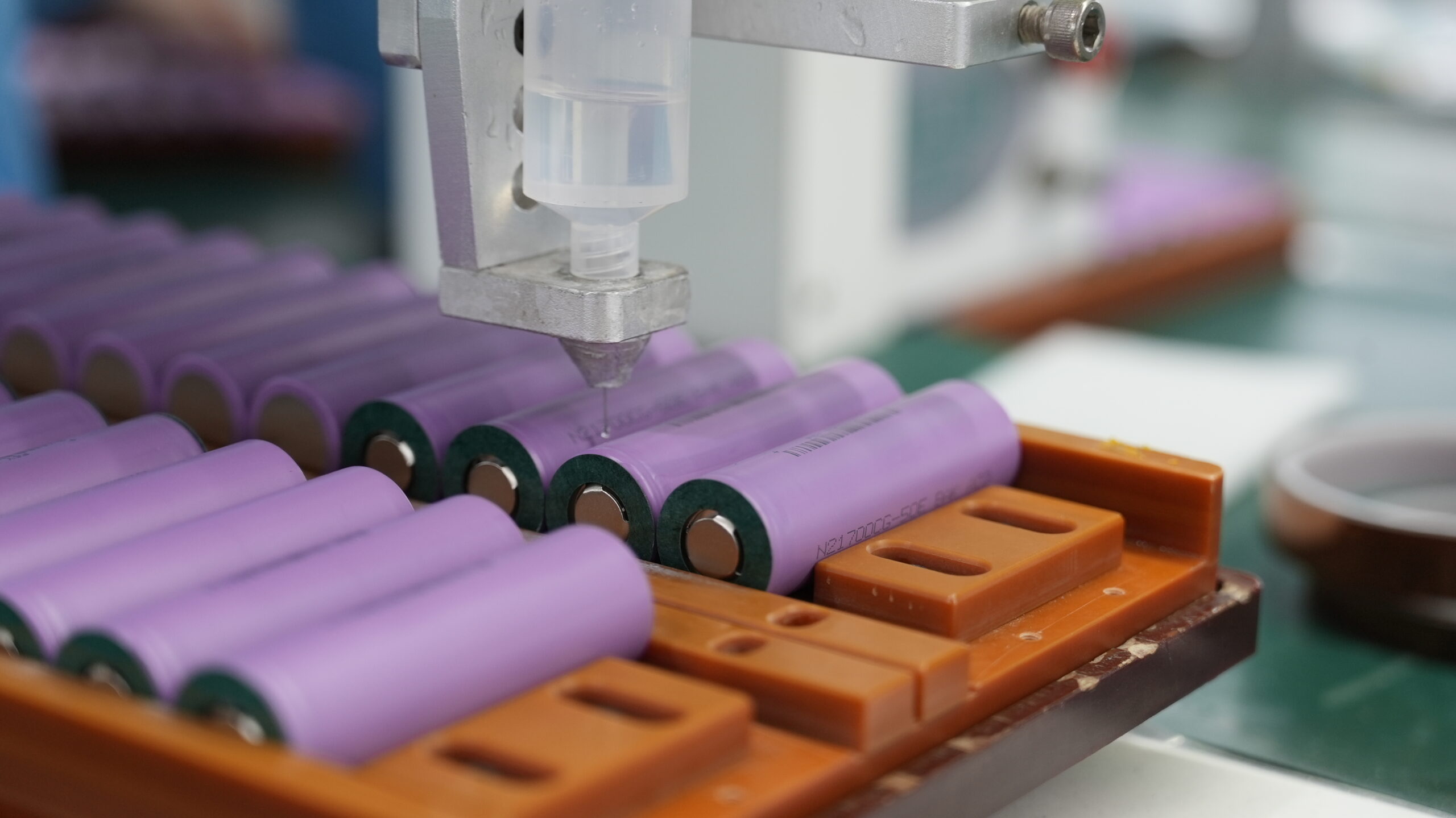
Custom Lithium Battery Packs help you achieve reliable oxygen concentrator performance in medical and industrial environments. You benefit from higher energy density, longer runtime, and improved safety.
Feature | ||
|---|---|---|
Increased Capacity | 15-25% more | N/A |
Charge Cycles | 2,000-3,500 | 1,000-1,500 |
Higher capacity extends runtime, supporting uninterrupted therapy.
Energy density ranges from 180 to 300 Wh/kg, boosting efficiency.
Key Takeaways
Custom Lithium Battery Packs offer higher energy density, leading to longer runtimes for oxygen concentrators. This ensures uninterrupted therapy, which is crucial for patient care.
Advanced safety features in custom battery packs, such as Battery Management Systems, protect users and equipment from overheating and overcharging, enhancing reliability in medical settings.
Regular maintenance, including battery recalibration and inspections, extends the lifespan of lithium battery packs and ensures compliance with medical standards.
Part 1: Custom Lithium Battery Packs: Technical Advantages

1.1 Energy Density
You need batteries that deliver maximum power without adding unnecessary weight. Custom Lithium Battery Packs offer superior energy density, which means you get more energy stored per unit of weight and volume. This advantage is critical for portable medical devices like oxygen concentrators, where every gram counts.
Gravimetric energy density (Wh/kg) measures how much energy you can store for each kilogram of battery.
Volumetric energy density (Wh/L) tells you how much energy fits into a given space.
High gravimetric energy density lets you design lighter, more compact oxygen concentrators.
Below is a comparison of common lithium battery chemistries used in medical devices:
Chemistry | Platform Voltage (V) | Energy Density (Wh/kg) | Cycle Life (cycles) |
|---|---|---|---|
LCO | 3.7 | 150-200 | 500-1,000 |
NMC | 3.7 | 180-220 | 1,000-2,000 |
LiFePO4 | 3.2 | 90-160 | 2,000-5,000 |
LMO | 3.7 | 100-150 | 700-1,500 |
LTO | 2.4 | 70-110 | 7,000-10,000 |
Solid-State | 3.7 | 250-350 | 1,000-2,000 |
Lithium Metal | 3.7 | 350-500 | 500-1,000 |
Tip: Higher energy density means longer runtime and less frequent battery changes, which is essential for uninterrupted oxygen therapy in medical settings.
1.2 Safety Features
Safety is a top priority when you select batteries for oxygen concentrators. Custom Lithium Battery Packs integrate advanced safety features to protect both users and equipment.
Battery Management Systems (BMS) monitor voltage, temperature, and current in real time, preventing overheating and overcharging.
Overcharge and over-discharge circuits cut off power at safe voltage limits.
Multi-layer safety casings and pressure relief valves reduce risks from impact and gas buildup.
Advanced separators and stable cathode materials like LiFePO4 enhance safety.
Thermal management systems maintain optimal temperatures, preventing thermal runaway and extending battery life.
Compliance with standards such as UL 1642, UL 2054, IEC 62133, and ANSI/AAMI ES 60601-1 ensures your battery packs meet strict regulatory and safety requirements.
Note: You should always verify that your battery supplier meets these safety standards to ensure reliable operation in medical and industrial environments.
1.3 Reliability
You depend on oxygen concentrators to work flawlessly in critical situations. Custom Lithium Battery Packs deliver reliability through high-quality materials, robust design, and rigorous testing.
Reliability Metric | Description |
|---|---|
Capacity | Measures the total charge a battery can hold, crucial for performance. |
Thermal Stability | Assesses how well the battery can maintain performance under temperature variations. |
Cycle Life | Indicates the number of charge/discharge cycles a battery can undergo before capacity significantly degrades. |
Real-world Stress Testing | Evaluates battery performance under actual usage conditions to ensure reliability. |
Custom lithium-ion battery packs are designed to meet specific energy requirements, which helps you reduce energy waste and improve efficiency. This tailored approach extends the operational lifespan of oxygen concentrators and minimizes replacement and maintenance costs. You benefit from lower total ownership costs over time.
Battery chemistry influences longevity.
Charge and discharge cycles are critical.
Temperature control affects performance.
State of charge maintenance is essential.
Quality of components plays a significant role.
Environmental factors impact battery life.
Usage patterns determine efficiency.
You can rely on custom solutions to deliver consistent performance in demanding medical, robotics, security, and industrial applications.
Part 2: Performance Benefits

2.1 Longer Runtime
You need oxygen concentrators that deliver consistent therapy for extended periods. Custom Lithium Battery Packs help you achieve longer runtimes by using advanced lithium-ion chemistries with high energy density. This means your devices can operate for several hours on a single charge, even at higher oxygen flow rates.
Custom lithium battery packs, especially lithium-ion types, provide higher energy density, which leads to longer runtimes for oxygen concentrators.
Optimized battery packs enhance performance, allowing devices to maintain longer runtimes at higher oxygen flow rates.
Portable oxygen concentrators (POCs) typically run for 3 to 12 hours on a single charge, depending on battery capacity and flow rate settings.
Some models, such as the Inogen One G5, can operate up to 6 hours at Setting 2, while double battery configurations can provide up to 13 hours of operation.
Devices with battery runtimes exceeding 5 hours are linked to improved patient outcomes and greater mobility. You can rely on these extended runtimes to support uninterrupted therapy during long shifts, patient transport, or field operations.
2.2 Portability
Portability is essential for professionals who need to move oxygen concentrators between locations or use them in the field. Custom Lithium Battery Packs contribute to portability through lightweight, compact, and ergonomic designs.
Higher battery capacity allows for longer operational time, which is crucial for users needing extended therapy.
Lithium-ion batteries offer energy density ranging from 180 to 300 Wh/kg, making battery packs lighter and easier to carry.
Compact and ergonomic designs, often with adjustable straps, improve transportability and user comfort.
Integration with device form factors ensures reliable operation without adding unnecessary bulk.
Safety features, such as Battery Management Systems (BMS), prevent overheating and overcharging, supporting safe transport.
Feature | Description |
|---|---|
Easy to carry | The battery pack fits in a waist bag or backpack, allowing hands-free mobility. |
More long working time | Packs with 12pcs 18650 cells provide up to 100 minutes of maximum power; users can carry extras for extended use. |
Most airlines require oxygen users to have 150% of battery life compared to flight time. For example, a 2-hour flight requires at least 3 hours of battery life. Custom lithium battery packs meet these requirements by offering high capacity in a compact form.
2.3 Stable Operation
Stable operation is critical for oxygen concentrators, especially in medical and industrial environments where reliability cannot be compromised. Custom Lithium Battery Packs ensure stable performance under varying environmental conditions.
Lithium iron phosphate (LiFePO4) batteries are known for their stability and long cycle life, making them ideal for oxygen concentrators that require consistent operation.
High-capacity lithium battery packs help maintain stable operation, even when environmental conditions change.
Proper safety certifications and compliance with international standards guarantee reliable oxygen delivery.
Devices equipped with custom lithium battery packs can deliver steady power output, reducing the risk of interruptions during critical procedures.
You can trust custom battery solutions to reduce power anxiety and enhance user confidence, whether you work in hospitals, emergency medical services, or industrial settings.
Part 3: Selection and Maintenance
3.1 Choosing the Right Pack
Selecting the right custom lithium battery pack for your oxygen concentrator ensures optimal performance and safety. You should match the battery’s voltage and capacity to your device’s requirements. Consider the discharge rate, chemistry, and cycle life for reliable operation in medical or industrial settings. Compatibility with your oxygen concentrator model is essential. Evaluate portability needs and operating environment, especially if you work in robotics, security, or infrastructure.
Criteria | Description |
|---|---|
Voltage (V) | Match the battery voltage to your device. Common options include 12V, 14.4V, and 28V. |
Capacity (mAh) | Higher capacity means longer runtime between charges. |
Discharge Rate | Ensure the battery supports your concentrator’s oxygen flow process. |
Chemistry | Lithium-ion batteries offer high energy density and long lifespan. |
Cycle Life | Choose packs with extended cycle life to reduce replacements. |
Compatibility | Confirm fit with your device’s voltage and connector needs. |
Portability | Assess weight and size for frequent transport. |
Operating Environment | Select batteries rated for extreme temperatures or demanding conditions. |
Tip: Always verify the presence of a smart Battery Management System (BMS) for enhanced safety and monitoring.
3.2 Maintenance Tips
Proper maintenance extends the lifespan of your lithium battery packs and ensures compliance with medical standards. Store batteries at around 50% charge if not used for two to three months. Keep them in a cool, dry place away from direct sunlight and extreme temperatures. Recharge according to manufacturer guidelines and monitor performance as batteries age. Inspect packs monthly for swelling, leakage, or overheating. Discontinue use if you notice any issues.
Perform battery recalibration once a month by fully depleting and recharging the battery.
Store spare batteries at 50% charge every two to three months.
Check battery charge efficiency every two years or as needed.
Maintenance Task | Recommended Interval |
|---|---|
Battery recalibration | Once a month |
Inspect for swelling, leakage, etc. | Monthly |
Check battery charge efficiency | Every 2 years or as needed |
Store spare batteries | Every 2-3 months at 50% charge |
Note: Regular maintenance helps you meet compliance requirements and maintain reliable operation in medical and industrial environments.
3.3 Supplier Evaluation
You need suppliers who prioritize safety, reliability, and compliance. Look for custom lithium battery packs designed with smart BMS protection and multi-level redundancy. Confirm that suppliers comply with IEC 60601, UL 2054, and ISO 13485 standards. Reliable suppliers serialize each battery pack and provide detailed diagnostic results for traceability. Rigorous inspection and advanced testing protocols ensure quality and accountability.
Compliance Requirement | Relevant Standard |
|---|---|
Safety requirements | IEC 62133, UL 2054, ISO 13485, IEC 60601-1 |
Biocompatibility | ISO 10993-1 |
Safety features for use near patients | IEC 62133 |
Quality management system | ISO 13485 |
You can trust suppliers who meet these standards to deliver battery packs that perform reliably in medical, robotics, security, and industrial applications.
You gain better oxygen concentrator performance by choosing batteries with high energy density, advanced safety features, and proven reliability. These qualities support uninterrupted therapy and efficient operation in medical and industrial settings. Apply careful selection and regular maintenance to maximize uptime and meet strict professional standards.
FAQ
What lithium battery chemistry works best for oxygen concentrators?
You should choose lithium iron phosphate (LiFePO₄) or nickel manganese cobalt oxide (NMC) for high safety, long cycle life, and stable performance in medical and industrial settings.
Tip: LiFePO₄ offers excellent thermal stability for critical applications.
How do you ensure battery packs meet safety standards?
You must verify compliance with IEC 62133, UL 2054, and ISO 13485. Reliable suppliers provide certification documents and perform rigorous testing for every batch.
Request test reports from your supplier.
Confirm serialization for traceability.
Can custom lithium battery packs support robotics and security systems?
Yes. You can use custom lithium battery packs in robotics and security systems. These packs deliver stable power, long runtime, and advanced safety features for demanding environments.




